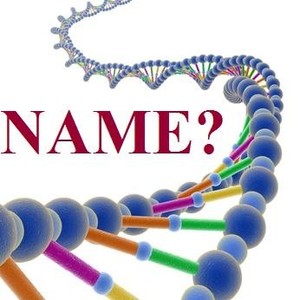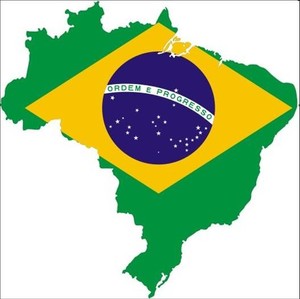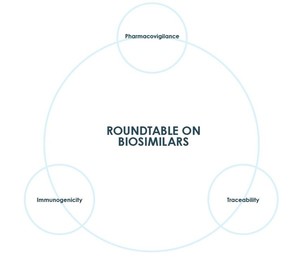Last update: 7 February 2014
The World Health Organization (WHO) held its 57th Consultation on International Nonproprietary Names (INNs) for Pharmaceutical Substances on 22 October 2013 in Geneva, Switzerland. During the meeting some stakeholders called for biosimilars to be assigned the same INN as their reference biologicals, while others called for the use of distinct non-propriety names.
The use of a three-letter code or fantasy suffix to distinguish between biosimilars was first proposed at the WHO’s 55th Consultation on INNs and was discussed again at its 56th Consultation [1]. The European Generic medicines Association (EGA) expressed its concern at the meeting that ‘the current robust WHO INN system runs the risk of being dismantled by the discussion around biosimilar medicines’.
Dr Sumant Ramachandra, Senior Vice President and Chief Scientific Officer, Hospira, pointed out that ‘Europe has approved biosimilars with the same non-proprietary names as their reference biologic[al]s for more than six years in a system that has proved effective’. Advocates for unique INN for biosimilars have claimed that if a common non-proprietary name were used, patients would not know which drug they are getting [2]. Dr Ramachandra argues that ‘biosimilars have been successfully tracked in the marketplace using their brand name, meaning a separate non-proprietary name isn’t necessary for keeping track of biosimilars once they’re on the market’.
EGA points out that ‘biosimilar medicines have been used safely since 2006, and pharmacovigilance data shows that current tracking and adverse event reporting systems work well. European Union legislation requires biologicals to be identified through the recording of brand name and batch number [3].
The Generic Pharmaceutical Association (GPhA), which represents the generics industry in the US, has filed a Citizen Petition with FDA recommending that ‘all biosimilars approved by the agency share the same international nonproprietary name as the biologic[al] products to which they refer’. GPhA joined EGA in stressing that ‘the established INN naming system has worked effectively and should be continued’. GPhA recommended that ‘all biosimilars share the same INN as the biologic[al] products to which they refer, because by definition they are ‘highly similar’ to the reference biologic[al]s and have no clinically meaningful differences that require a unique name’.
Advocates for a common INN for biosimilars are concerned that there could be the possibility of overdosing or misdosing if different names were used, as a patient could inadvertently be prescribed two versions of the same biosimilar [2].
The Alliance for Safe Biologic Medicines (ASBM), which represents healthcare, patient and physician groups, as well as originator biological companies, called for the use of distinct non-propriety names for biological medicines at the WHO meeting in October 2013. They argued that this would make it clear which medicine a patient received and ensure that adverse events can be accurately traced back to the correct product.
But the discussion does not end with the WHO meeting, a bipartisan group of senators in the US has also sent a letter to FDA expressing their concerns on the issue of naming of biosimilars. The group states that ‘if biosimilars are unable to share the same active ingredient name as the brand originator product, we believe the Congressional intent behind the BPCIA [Biologics Price Competition and Innovation Act] would be undermined as would the safety and accessibility of affordable biosimilars’. The letter was prompted after FDA removed its 2006 statement on naming of biologicals/biosimilars from its website.
Editor’s comment
How do you think biosimilars should be named? Please feel free to share your thoughts via email or in the comments section below. What is your opinion on the issue of INN for biosimilars? Should biosimilars have unique INNs or should they share the same INN as their reference biologicals? How will safety be affected by any decision over naming of biosimilars?
Related articles
Fight continues over biosimilar naming standards
Naming and interchangeability of biosimilars raised in new survey
References
1. GaBI Online - Generics and Biosimilars Initiative. Naming requirements in Australian biosimilars guidance [www.gabionline.net]. Mol, Belgium: Pro Pharma Communications International; [cited 2013 Oct 31]. Available from: www.gabionline.net/Guidelines/Naming-requirements-in-Australian-biosimilars-guidance
2. GaBI Online - Generics and Biosimilars Initiative. FDA’s public hearing on biosimilars draft guidances [www.gabionline.net]. Mol, Belgium: Pro Pharma Communications International; [cited 2013 Oct 31]. Available from: www.gabionline.net/Biosimilars/General/FDA-s-public-hearing-on-biosimilars-draft-guidances
3. GaBI Online - Generics and Biosimilars Initiative. Biologicals in EU to be identified by brand names [www.gabionline.net]. Mol, Belgium: Pro Pharma Communications International; [cited 2013 Oct 31]. Available from: www.gabionline.net/Policies-Legislation/Biologicals-in-EU-to-be-identified-by-brand-names
Permission granted to reproduce for personal and non-commercial use only. All other reproduction, copy or reprinting of all or part of any ‘Content’ found on this website is strictly prohibited without the prior consent of the publisher. Contact the publisher to obtain permission before redistributing.
Copyright – Unless otherwise stated all contents of this website are © 2013 Pro Pharma Communications International. All Rights Reserved.
Source: ASBM, EGA, GPhA, Hospira, US Senate








 0
0











Post your comment